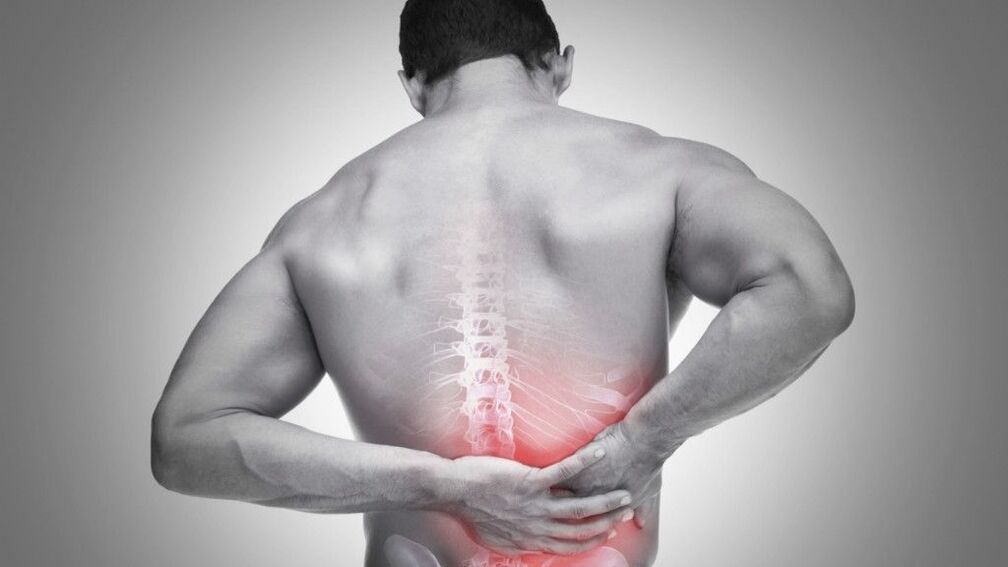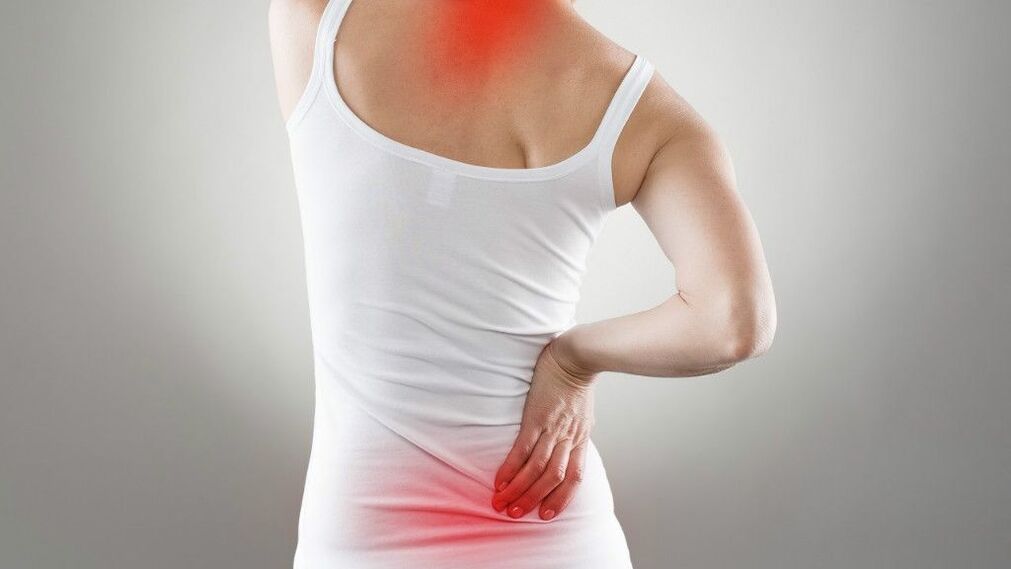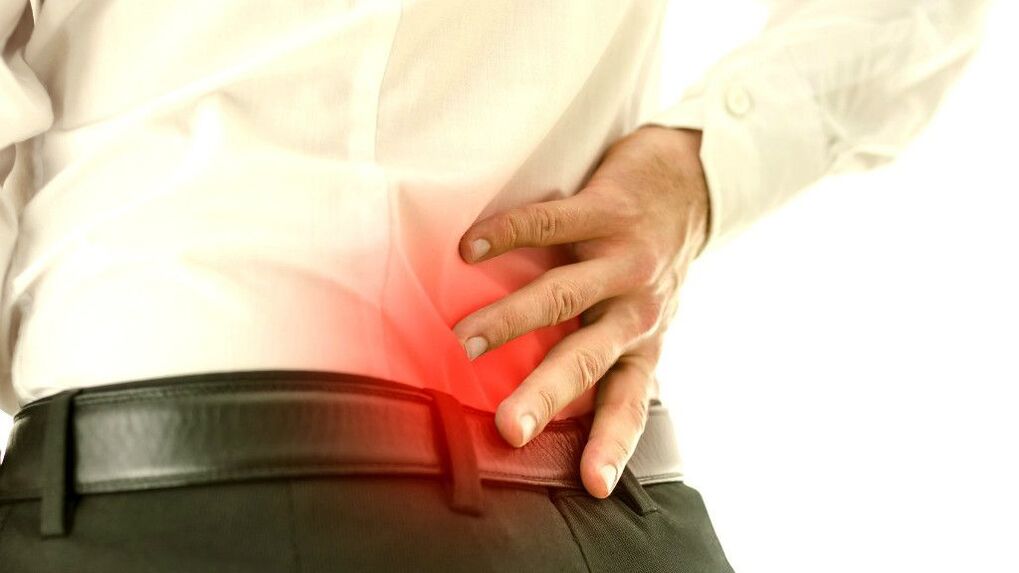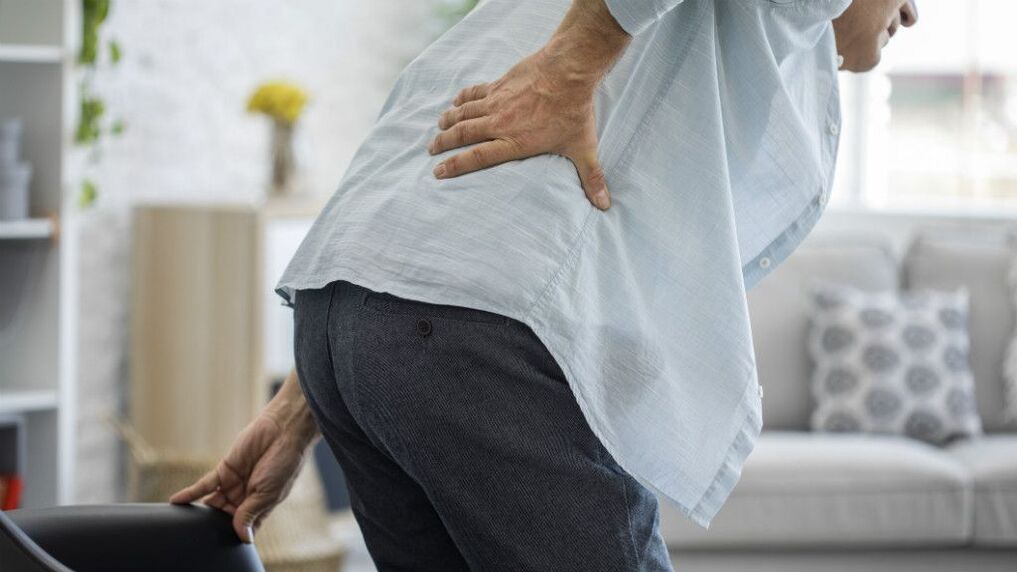Pain, low back pain, constant heaviness, do you know these back sensations?
Harmless pulling pain is often a sign of a dangerous disease. In the article we will analyze all the causes of the disease.

causes
1. Diseases of the spine and pelvic bones.
- Osteochondrosis (damage to the intervertebral discs (protrusion, herniated disc);
- Spondylitis (an inflammatory disease of the spine);
- Spondyloarthrosis (arthrosis of the intervertebral joints);
- Spondylosis (bone growth);
- Spondyloarthritis (inflammation of the intervertebral joints);
- Myositis (inflammation of the muscles);
- Osteorosis (decrease in bone density) with compression fractures of the vertebrae and other bone structures;
- Injuries of the spine and pelvic bones (fractures, cracks);
- Sacroiliitis (inflammation of the sacroiliac joints);
- Tumors of bone structures and soft tissues.
2. Reflex pain in the lumbar spine,associated with diseases of the abdominal and pelvic organs (inflammatory diseases and tumors), this pain is often accompanied by abdominal pain.
The nature of the painit could be different:
- Acute is the pain that occurs quickly, suddenly;
- Chronic - pain for more than 2 months, occurs with the progression of diseases of the spine;
- With inflammatory pathologies of the genitourinary system, abdominal organs (with chronic gastritis, pancreatitis, cholecystitis, enterocolitis).
Pain intensity
From discomfort to severe pain.
In case of acute and intense abdominal pain that radiates to the lumbar spine, it is always necessary to exclude surgical pathology that requires urgent surgical intervention (gastrointestinal bleeding, appendicitis, peritonitis, etc. ).
Intense pain in the lumbar spine
It can be reflex (muscle spasm caused by irritation of the receptors in the paravertebral muscles). It hurts a person to cough, sneeze, all movements are accompanied by pain. When the nerve root is compressed (disc protrusion, disc herniation), the pain spreads to the lower limbs, often to one side.
Myofascial syndrome
It is caused by irritation of the pain receptors in the muscles and fascia. There is the formation of triggers (pain nodes) in the muscles, the pain syndrome is chronic, often recurring.
Any trauma to soft tissue or bone structures is also accompanied by intense pain.
When to see a doctor: Any case of lower back pain requires a visit to a doctor to diagnose the cause of the pain and take action.
Pain in men, in women
With diseases of the reproductive system, the pain syndrome differs in males and females.
For men with prostatic pathology, a pulling and aching pain is characteristic, often accompanied by a violation of urination. In women, the symptom is often acute, pronounced. With ovarian apoplexy or ectopic pregnancy, the pain is unbearable. Usually the syndrome is more intense on the affected side.
With endometriosis, uterine myoma - painful sensations, traction. If the pain is associated with pathology of the spine, the intensity of the pain does not depend on the gender. It is noted that men go to the doctor later.
Diagnostics
Examination by specialists
- vertebroneurologist;
- gastroenterologist;
- neurosurgeon;
- surgeon;
- gynecologist;
- urologist;
- rheumatologist;
- oncologist.
Laboratory methods
- general blood test (to exclude the inflammatory process, the level of leukocytes, ESR), the exclusion of anemia (hemoglobin level);
- general urine analysis: exclusion of the inflammatory process in the bladder, kidneys (bacteria, leukocytes, erythrocytes);
- stool analysis for occult blood;
- blood biochemistry: rheumatology tests to rule out systemic inflammation (CRP, RF, uric acid), liver function evaluation (alt ast bilirubin), renal function evaluation (creatinine urea), pancreatic function (amylase), etc.
Instrumental research methods
- x-ray of the lumbar spine and pelvic bones, normal x-ray of the abdominal cavity (excluding intestinal obstruction);
- Ultrasound of the abdominal and pelvic organs;
- FGDS;
- colonoscopy;
- MRI (CT) of the lumbar spine, MRI (CT) of the lumbar spine with contrast;
- MRI (CT) of the abdominal cavity and small pelvis, MRI (CT) of the abdominal cavity and small pelvis with contrast.
Treatment
When a tumor is detected, depending on the location and nature of the tumor, the tactics of treatment, surgery or other (observation and treatment in a neurosurgical, surgical, oncological dispensary) are determined.
Pharmacological treatment
Diseases of the spine (most often in the context of osteochondrosis):
- NSAIDs;
- muscle relaxants;
- opioid analgesics;
- diuretic drugs;
- vascular drugs;
- antibacterial drugs;
- medical and medical blockade with novocaine, lidocaine and diprospan.
Non-pharmacological methods
They are mainly used in the treatment of diseases of the spine:
- physiotherapy (magnetic laser, magnetotherapy, CMT with novocaine, etc. );
- acupuncture;
- lumbar spine hardware traction;
- manual therapy;
- massage;
- balneotherapy (applications of mud, ozokerite);
- Physical therapy.


Prevention of diseases of the spine (in the context of osteochondrosis) all the above methods (with the exception of physiotherapy).
Prevention of diseases of the gastrointestinal tract: diet, diet, work and rest.
If you have lower back pain, go to the clinic.
The hospital has all the specialists and all the diagnostic methods presented in this article. There are also inpatient wards: a gastroenterological ward and a city spinal center. All methods of treatment are used, with the exception of surgery. You can be monitored, examined and treated on an outpatient basis, i. e. outside the hospital.














































